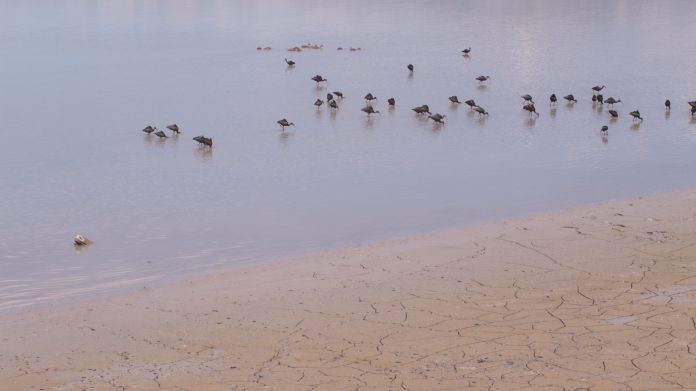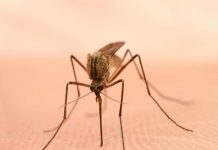
PROVO, Utah, June 12, 2018 (Gephardt Daily) — The public is being warned to avoid Utah Lake’s Provo Bay after the discovery of a blue-green algal bloom, according to the Department of Environmental Quality.
A news release from the Utah DEQ adds that residents should keep their pets out of the bay.
The announcement was made after the Division of Water Quality (DWQ) collected samples and found the presence of algal species that have the potential to produce toxins.
“Utah Lake is a huge lake with many areas not currently affected,” said Eric Edwards, Deputy Director of Utah County Health Department, in a prepared statement.
“We want those recreating to safely enjoy the lake and also make sure they are properly cautioned about the presence about potential harmful algal blooms in certain areas of the lake that can pose health risks.”
Water Quality crews responded on June 6, to a report of an algal bloom in Provo Bay and collected five samples at various locations at and around the Swede Sportsman Access.
Sample results detected the presence of two cyanotoxins, anatoxin-a and microcystin, with one sample at the Swede Sportsman Access exceeding the Utah Department of Health and Utah DEQ health-based threshold for recreational waters. All three samples sent to the lab for cell-count concentrations exceeded the health-based threshold, the news release said. The cell count is an indication of harmful levels of cyanobacteria.
Water Quality crews are continuing to collect additional samples around the lake.
Utah County Health Department is posting warning signs at Swede Sportsman Access near Provo Bay to warn people about recreating in the Bay due to the presence of potentially harmful algal blooms.
Although blue-green algae are a natural part of many freshwater ecosystems, the news release said, under the right conditions they can proliferate rapidly.
“High levels of nutrients in the water, combined with warm temperatures, abundant sunlight, and calm water, can promote growth, resulting in extensive blooms,” the news release said. “These blooms consist of cyanobacteria, often referred to as blue-green algae, a type of bacteria that poses risks to humans, wildlife, domestic animals and fish.”
Symptoms of exposure include headache, fever, diarrhea, abdominal pain, nausea and vomiting and sometimes allergic- like reactions from skin contact.
For concerns about possible human exposure, call the Utah Poison Control Center at 800-222-1222, or your physician. Utah DEQ will continue to provide updated information here.






